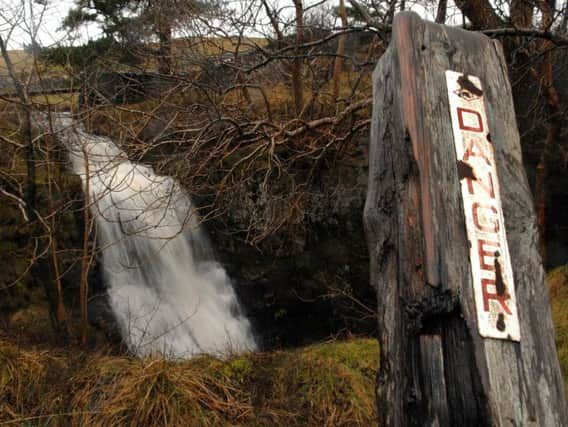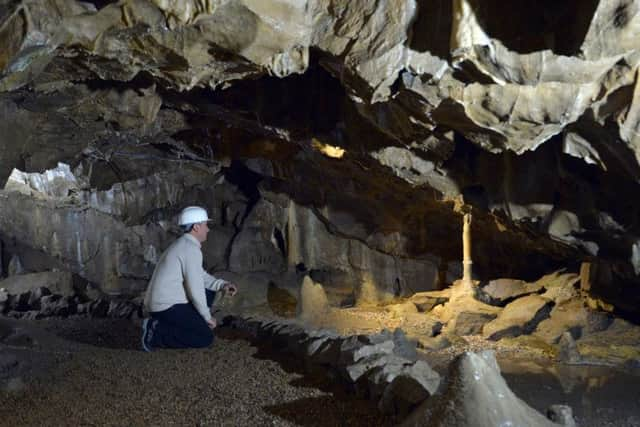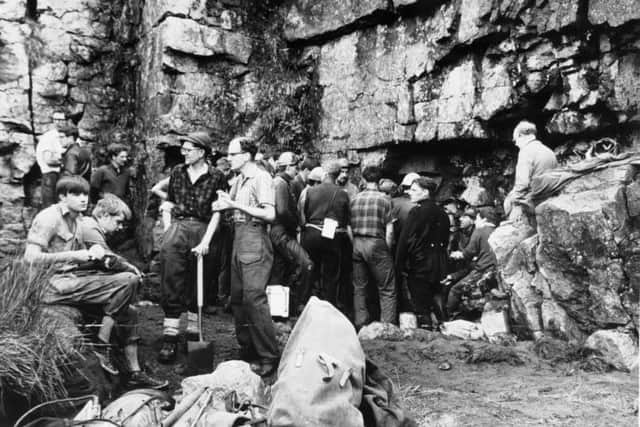The beckoning darkness: A history of cave deaths in the Yorkshire Dales


Harry Hesketh, 74, an experienced caver from the Skipton area, was excavating a new cave at Fountain's Fell, between Horton in Ribblesdale and Kettlewell, when he fell 20ft down a pitch and broke his femur.
The cave system he and two companions had been exploring was not mapped and the passages were too narrow for medical assistance to reach him. He died during the rescue attempt, which involved over 90 volunteers and took 18 hours. Upper Wharfedale Fell Rescue Association, Swaledale Mountain Rescue Team, Bradford Pothole Club, the Clapham-based Cave Rescue Organisation and Yorkshire Spelio Society all took part in the operation.
Advertisement
Hide AdAdvertisement
Hide Ad

It's the first caving death in the Dales in two years - the last fatality was in 2017, when Michael Wood passed away from what are thought to be natural causes in Ewes Top Moss Pot on Scales Moor.
The great underground caverns of the Yorkshire Dales have been claiming cavers' lives since the late 19th century, when Victorian explorers first began to probe the hidden world beneath the peaks. A total of 73 cavers have died during expeditions since then.
The tragedy that captured the world's attention


The most devastating incident was the Mossdale Caverns tragedy, one of the greatest to have ever struck the sport. In 1967, six young men considered among the elite potholers of their generation drowned when the cave flooded after a sudden cloudburst. Mossdale, on the eastern flank of Wharfedale near Grassington, was seen as a death trap by even the most experienced cavers and few had penetrated far inside its depths. Three men had reached the end of the system before the tragedy, but the trip involved crawls through neck-deep water and took up to ten hours.
Advertisement
Hide AdAdvertisement
Hide AdThe group included two cavers from Leeds University - David Adamson, 26, and Geoff Boireau, 24. Three 21-year-old men came from a club based in Bolton. Colin Vickers, 23, Bill Frakes, 19, and Michael Ryan, 17, were members of Bradford Pothole Club. Two women accompanied them - one of them Adamson's girlfriend - but did not plan to enter the system fully.
The women and two of the Bolton men, Jim Cunningham and John Shepherd, decided to explore the most accessible passages near the entrance to the system and bade their six companions farewell. Cunningham and Shepherd had reservations about the weather forecast, which had predicted heavy rain.
The four survivors left the cave several hours later and returned to their accommodation in Ingleton. The six cavers were not due to exit until midnight. One of the women realised that the now-torrential rain spelled danger, and checked the level of Mossdale Beck several times - it kept rising. At 9pm, the cave entrance was completely submerged and the alarm was raised. Cunningham and Shpeherd, who has been in a pub near Ingleton, returned to the scene and cavers from all over the country were summoned for the rescue.
Advertisement
Hide AdAdvertisement
Hide AdThe rescuers had to form a dam to access the caves, but their incredible endurance and efforts were in vain - all six men were found wedged in flooded passages. Permission was granted for their bodies to remain underground.
Their horrific deaths sent shockwaves through the potholing community, but cavers were still prepared to put their lives on the line to map unconquered caverns.
The first casualty
The first person to die in a caving accident in the Dales was a woman. Mabel Binks was descending Alum Pot in 1936 when she was hit by a rock fall - but an inquest into her death came to the horrendous conclusion that a stone had been thrown deliberately. Alum Pot went on to claim three more lives in subsequent decades.
Another incident involving multiple deaths occurred in 1976, when three men died in Langstroth Pot after encountering foul air while free-diving. Three years later there were two deaths in Cote Gill Pot when the victims suffered carbon dioxide poisoning while using explosives to blast passages.
Advertisement
Hide AdAdvertisement
Hide AdIn 1988, three cavers, including a woman, died in Ease Gill Caverns as a result of a rock fall.
The Clapham-based Cave Rescue Organisation was involved in the world's first successful underwater stretcher evacuation, when concussed Christopher Hay, who was suffering from hypothermia, was 'dived' out of a submerged passage in Meregill Hole in the 1960s. He died on his way to hospital.
"We rescue our own"
Although emergency services and mountain rescue teams assist with cave rescues from the surface, in reality, the only people with the expertise to go down below and free their trapped companions are cavers themselves. In upland communities, cavers consider themselves on call should an emergency arise, and in some cases will travel long distances to assist with a rescue operation. The sport's leading names are consulted for their invaluable knowledge of the lay-out of the more remote reaches of cavern systems.
The Dales have a proud history of cave exploration, and these hardy men and women know the risks they are undertaking. Future expeditions honour the sacrifices of those who have died underground in a bid to discover unknown worlds.